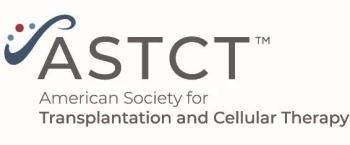
Venetoclax Active in Relapsed/Refractory t(11;14) Multiple Myeloma
The BCL-2 inhibitor venetoclax had an acceptable safety profile and showed evidence of activity in patients with relapsed/refractory multiple myeloma.
The BCL-2 inhibitor venetoclax had an acceptable safety profile and showed evidence of activity at doses up to 1,200 mg per day in patients with relapsed/refractory multiple myeloma, according to the results of a phase I study. Responses occurred predominantly in patients with t(11;14) abnormality and those with a favorable genetic profile. The results of the study were
“The oral BCL-2 inhibitor venetoclax at a daily dose up to 1,200 mg demonstrated single-agent anti-myeloma activity in patients with relapsed/refractory multiple myeloma positive for t(11;14), for whom multiple prior lines of therapy have failed,” wrote Shaji Kumar, MD, of the Mayo Clinic in Rochester, Minnesota, and colleagues. “Venetoclax has a unique mechanism of action and may offer a novel biologic-driven approach in multiple myeloma.”
Patients with relapsed/refractory multiple myeloma received venetoclax monotherapy at either 300-, 600-, 900-, or 1,200-mg doses. All patients had a 2-week lead-in with weekly dose escalation. Thirty patients participated in the dose-escalation cohorts, and 36 participated in the 1,200-mg safety expansion cohort. The median age of patients was 63 years.
Patients in the study had received a median of five prior therapies. The majority (61%) were bortezomib and lenalidomide double refractory, and about one-half (46%) had t(11;14) abnormality.
Treatment with venetoclax resulted in an overall response rate of 21%, with 15% of patients achieving a very good partial response or better. Most of the responses that occurred were in patients with t(11;14); the overall response rate was 40%, with 27% of patients achieving a very good partial response or better.
The median duration of response was 9.7 months, with a median time to progression of 2.6 months. Patients with t(11;14) also had a median duration of response of 9.7 months, but they had a median time to progression of 6.6 months compared with 1.9 months in patients without t(11;14).
The responses seen in patients with t(11;14) did not seem to be affected by the prior number of therapies or refractoriness to prior therapies. The overall response rate was 22% in patients with one to three prior therapies compared with 48% in patients who had four or more.
Finally, the researchers conducted a biomarker analysis that showed that response to venetoclax was correlated with higher BCL2:BCL2L1 and BCL2:MCL1 mRNA expression ratios.
Overall, treatment with venetoclax was well tolerated. The most commonly occurring adverse events were mild gastrointestinal symptoms, such as nausea (47%), diarrhea (36%), and vomiting (21%). Of the grade 3/4 events, cytopenias were the most common, with thrombocytopenia (32%), neutropenia (27%), anemia (23%), and leukopenia (23%) reported.
Newsletter
Stay up to date on recent advances in the multidisciplinary approach to cancer.
















































































